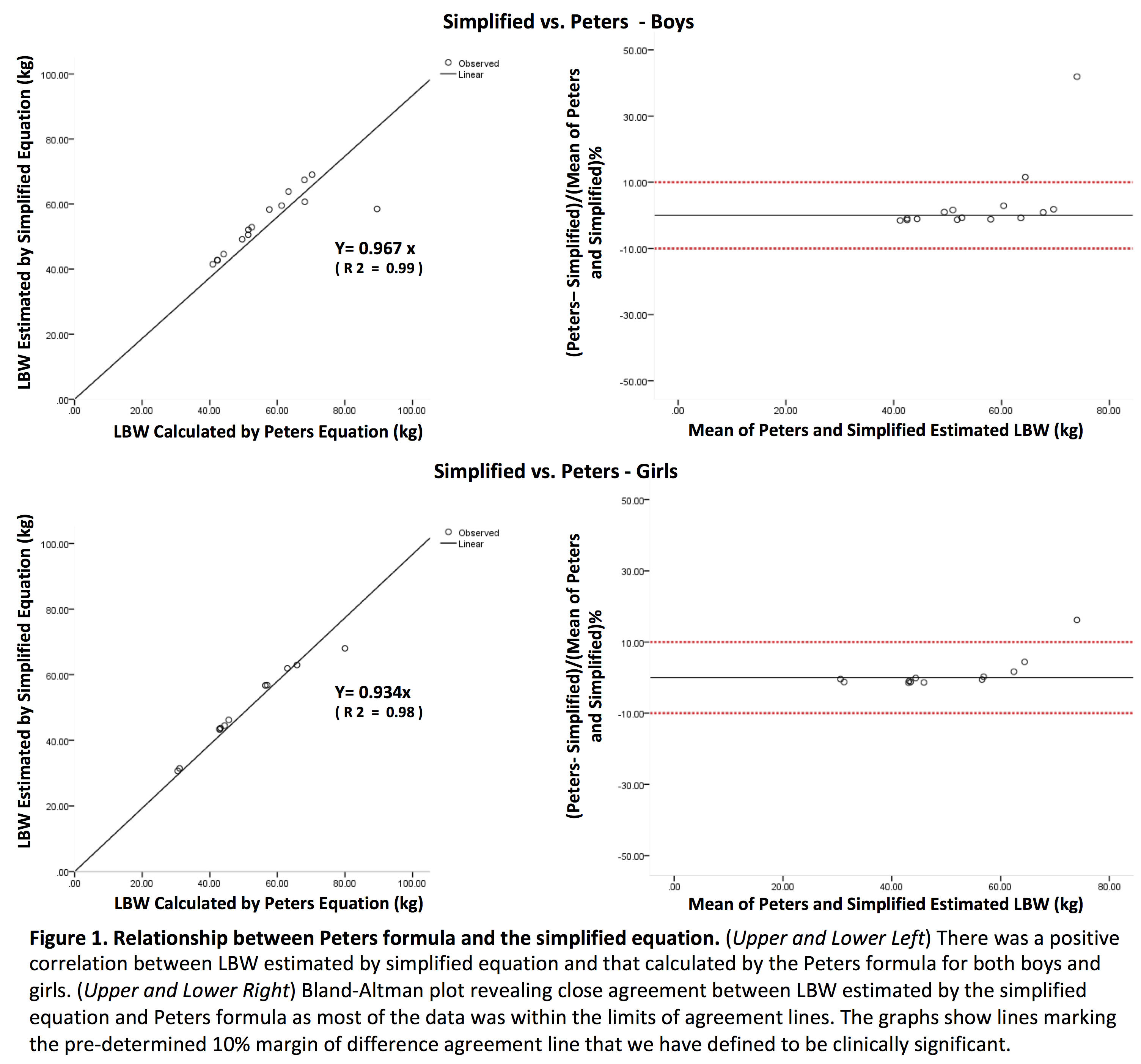NM-228
Simplified Estimation of Lean Body Weight Using Body Mass Index in Pediatric Patients
Tsui J, Tsui B
Stanford University, Palo Alto, California, United states
Background
There has been a major increase of clinical obesity in the pediatric population over the recent years, with altered pharmacokinetics and pharmacodynamics requiring changes in drug dosing with lean body weight (LBW) instead of total body weight. A formula such as the one proposed by Peters et al (1) (i.e. LBW = 3.8 x (0.0215 x weight (kg)**0.6469 x height (cm)** 0.7236) has been used clinically to estimate LBW for pediatric patients. However, this equation is complicated and difficult to recall. Since there is a close relationship between Body Mass Index (BMI) and lean body weight, we hypothesize that a simplified and practical method for determination of LBW could be directly calculated with the patient’s own BMI value.
Methods
Using published clinical data of obese children [total body weight (TBW) and height] as testing data (2), a series of linear regression analyses and Bland-Altman plots were computed comparing the estimated LBW, derived from one commonly used LBW equation (1) with the proposed simplified equations [i.e. (100 - BMI) x TBW for males (M), and (90 - BMI) x TBW for females (F)]. This simplified formula was based on the previously reported results concerning gender specific differences in fat distribution and the approximate 10% difference in lean body weight between men and women. (3). We also defined the acceptable difference limit between equations to be less than 10%.
Results
Figure 1 showed that the coefficient slopes were approximately 1 (i.e. y=x) for both boys and girls, demonstrating that the predicted LBW calculated from the simplified formula is highly correlated to the predicted LBW calculated from the complex Peter formulas. The assessment using Bland-Altman plots showed only a few outlying points outside the 10% limit when comparing the formulas.
Discussion
Our study demonstrates that the proposed simplified equations using BMI provide estimations of LBW comparable to commonly used formulas. This may facilitate the calculation of LBW at the bedside and in emergency situations. These results support BMI, a value calculated from the patient’s height and weight, which can be used as an indicator of obesity as well as to calculate LBW. However, further studies are needed to test the formula using a larger pediatric population data since a small sample was used in this study.
Conclusions
The simplified equation utilizing BMI can provide a more practical way to estimate LBW by replacing complex equations with one equation (gender specific) that is easier to remember and provides equivalent results.
References
1. Peters AM et al. Estimation of lean body mass in children. Br J Anaesth 2011; 106(5):719-23.
2. Forbes GB. Lean body mass and fat in obese children. Pediatrics 1964;34:308-14.
3. Jackson AS et al. The effect of sex, age and race on estimating percentage body fat from body mass index: The Heritage Family Study. Int J Obes 2002; 26: 789–96.
Top












